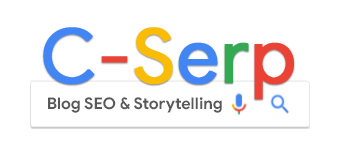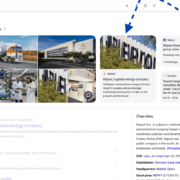How to optimize your company’s Google knowledge panel

For the last three years, Google has been focusing on person entities. That just changed.
Corporate entity knowledge panels recently received an upgrade with knowledge panel cards.
These dominate the brand SERP because they appear right at the top, take up significant SERP real estate, and are colorful and highly visual.
If your company doesn’t have these – or worse, don’t have a knowledge panel at all – you’re missing out on impressing your bottom-of-the-funnel audience with Google’s very visible stamp of approval on your brand SERP.
Common knowledge panel elements for a corporation
Google’s corporate knowledge panels include a variety of elements designed to enhance visibility and provide valuable information to users.
Note that horizontal knowledge panel cards for corporations are the big news in 2025.
Most other features below are not new, but since you’ll now be trying to trigger knowledge panel cards to gain that additional real estate at the top of your brand results, take this opportunity to optimize your entire corporate knowledge panel.
Key components you should optimize include:
- Knowledge panel cards (Horizontal). (new)
- Knowledge panel cards (Vertical). (new)
- Filter pills. (new)
- Description.
- Attributes.
- Key people. (new)
- Social profiles.
- Store rating.
- Reviews and ratings.
- Video reviews.
- Videos from.
- Trust score.
- Trending entities.
- Related entities.
- People also search for.
- AI Overviews.
- Coming soon: AI-driven multi-source descriptions. (Goodbye, Wikipedia!)
Knowledge panel cards (Horizontal)
Top rail knowledge panel cards have been showing for person entities for over five years but not for corporations.
Since the start of 2025, knowledge panel cards have become significantly easier to trigger for people, and it is now possible to trigger them for corporations.
We frequently see:
- 4 to 6 photos on the left-hand side (which you can change using traditional image SEO techniques on relevant pages).
- The entity’s website homepage in the middle (another reason to optimize that for brand).
- Dynamic prospect/customer-centric content on the right-hand side (videos, recent articles, customer service number, login page, etc.).
To get these horizontal knowledge panel cards, you need two or more of the following:
- A solid entity home.
- Consistent visuals across your digital ecosystem.
- Active social media.
- A steady flow of news.
- Solid long-term attributes in the knowledge graph, such as:
- Founders.
- Founding date.
- Founding location.
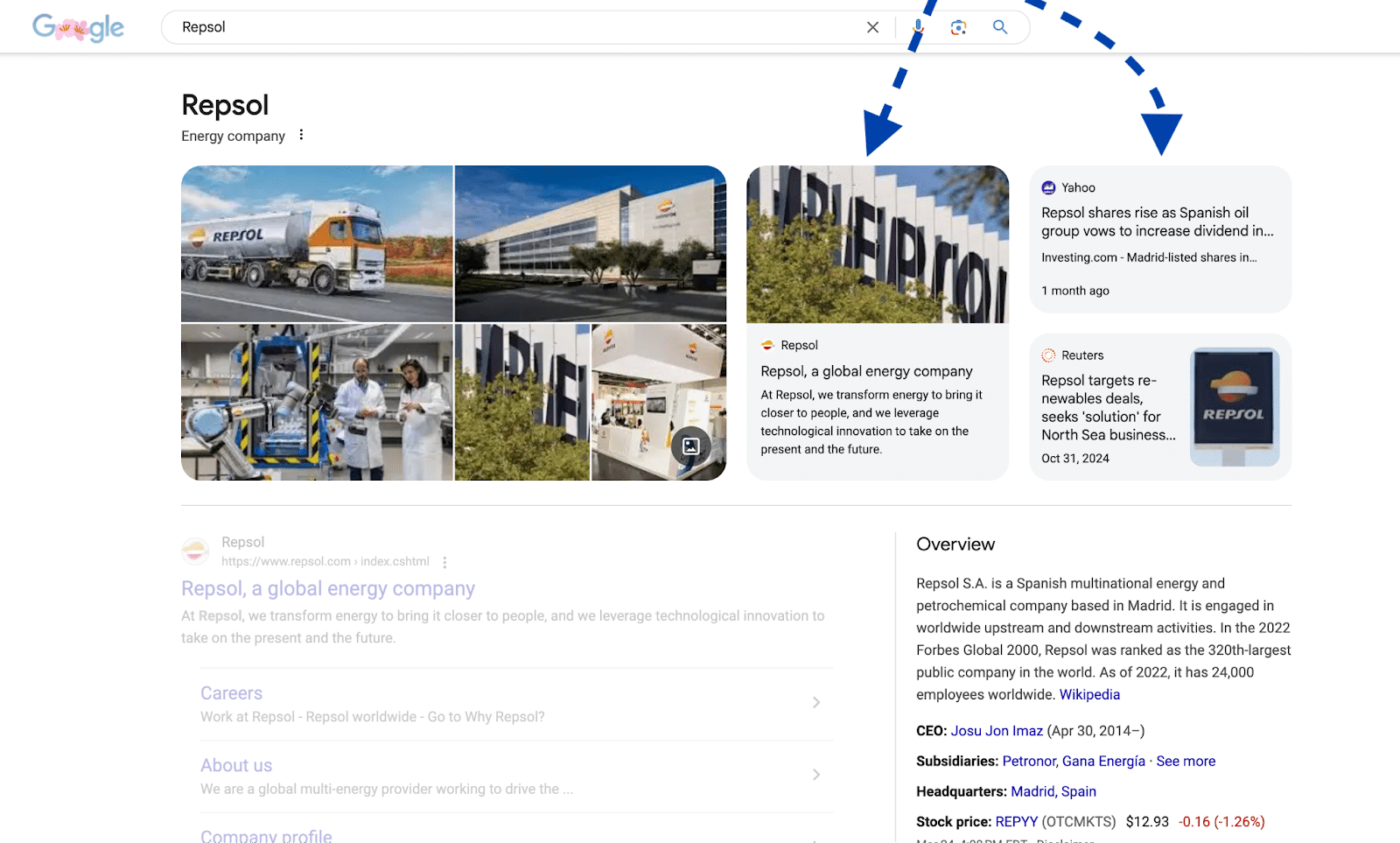
Knowledge panel cards (Vertical)
The knowledge panel cards on the right rail are new.
They replace attributes such as:
- Founders.
- Customer service.
- Parent or sub-organizations.
For now, these trigger unpredictably and appear more often on mobile than desktop.
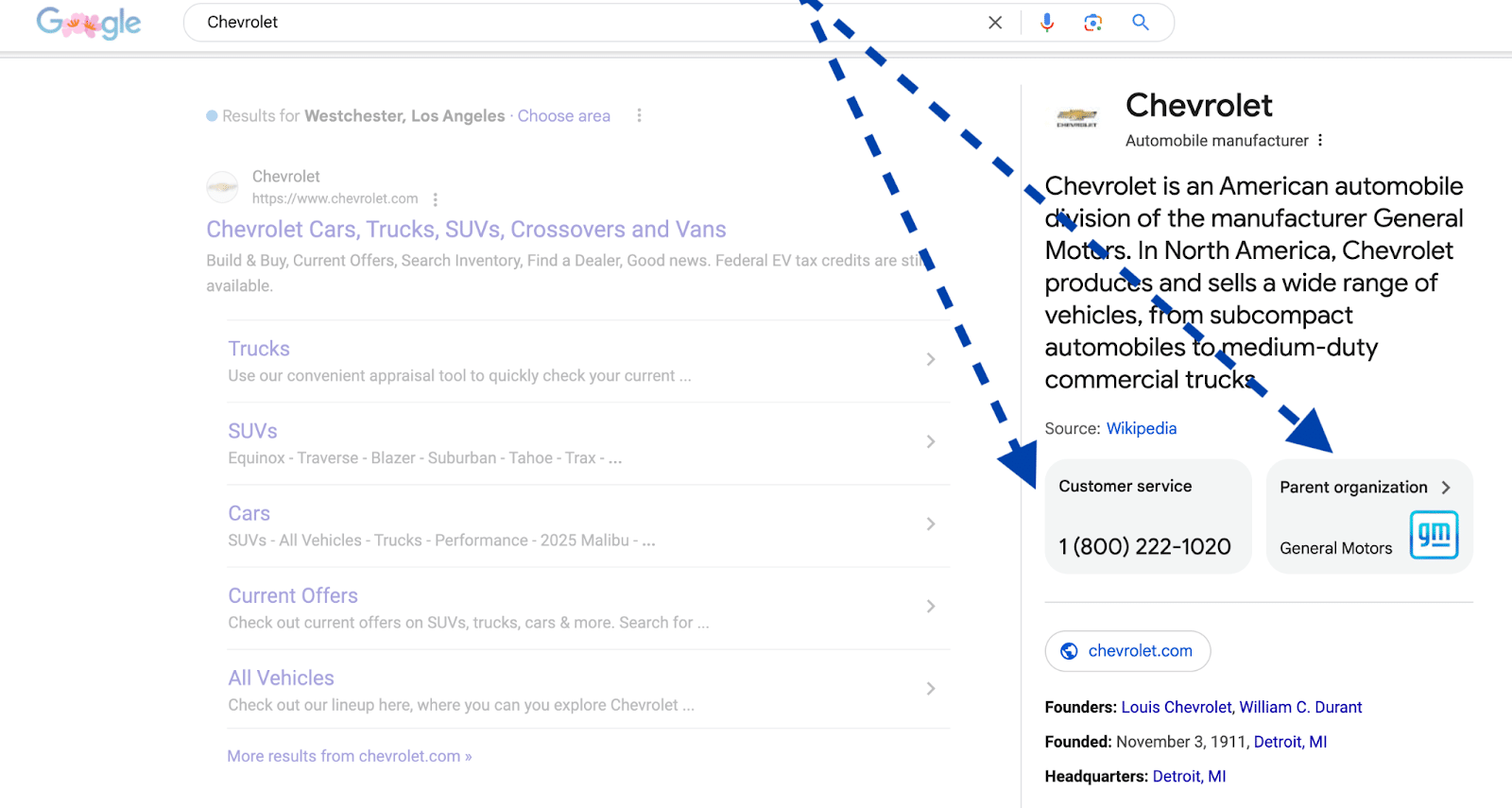
Filter pills
These have been showing for person entities for several years but only became available for corporations in 2025.
They appear as alternate topical vertical brand SERPs when Google identifies a relevant and helpful ontology, similar to how related entities are displayed, which I’ll cover later in this article.
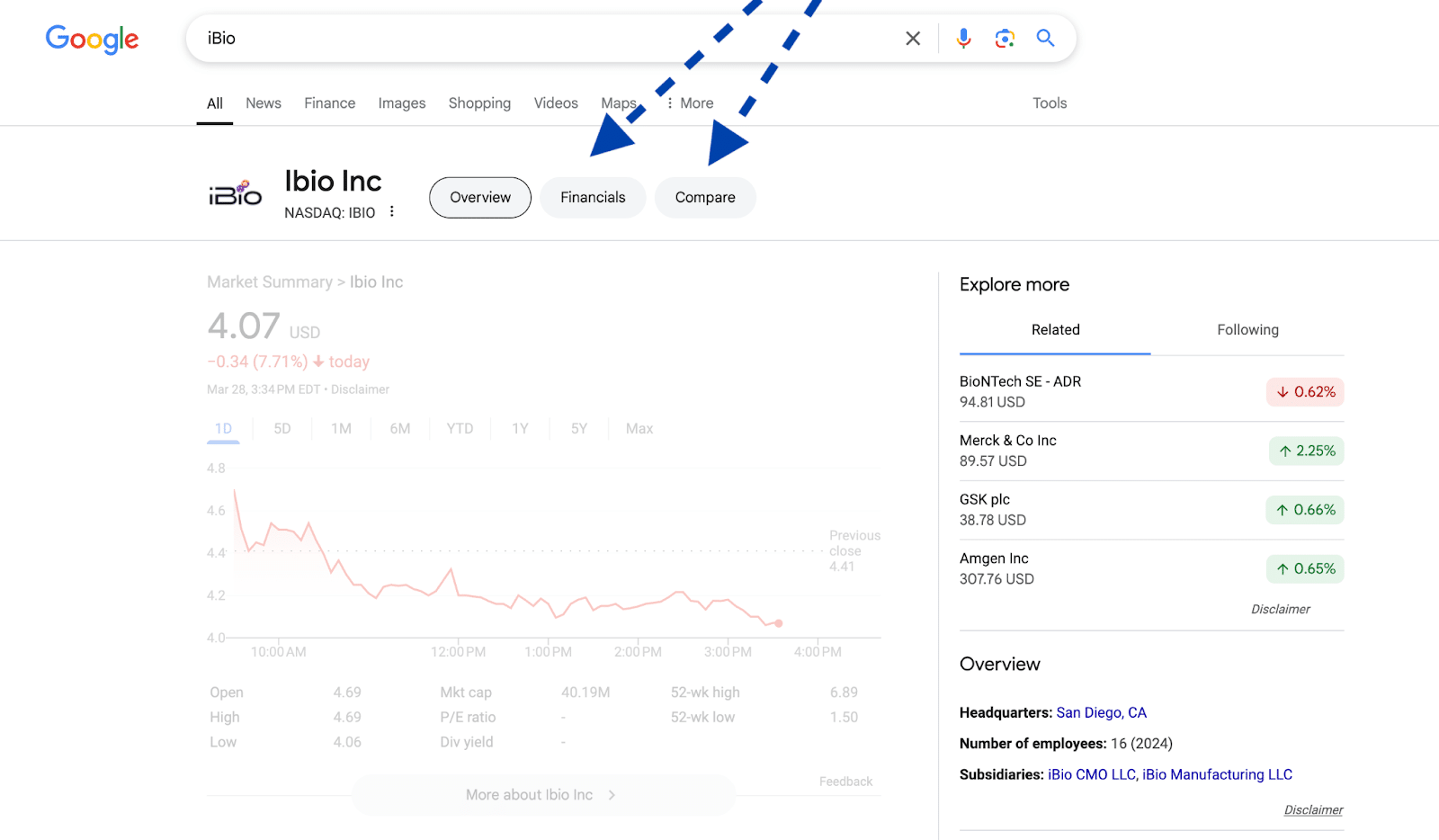
Company description
If a Wikipedia page exists, the description will typically be the first few sentences from that page.
However, we’re now seeing instances where other sources “beat” Wikipedia.
This highlights the decreasing dominance and importance of Wikipedia for most businesses and knowledge panels.

We’re seeing a significant increase in descriptions summarized from company websites.
To achieve this, you need a well-organized, clear, and honest “About” section.

We’ll likely see AI-driven multi-source descriptions soon (which I cover at the end of the article).
Attributes
Google doesn’t display all the attributes it has gathered. It only shows those it’s confident are accurate and relevant to the user.

To get specific attributes in your knowledge panel, clearly state them in your “About” section and link them to corroborating information from official sources.
Key people
Google is increasingly displaying key people – typically C-level executives – when they have a knowledge panel.
Our data shows this is especially common for financial institutions.

This is more significant than it may seem.
The number of people with a knowledge panel quadrupled between June 2023 and June 2024, with C-level executives at major corporations and individuals associated with YMYL corporations particularly impacted by these updates.
For example, Costco:
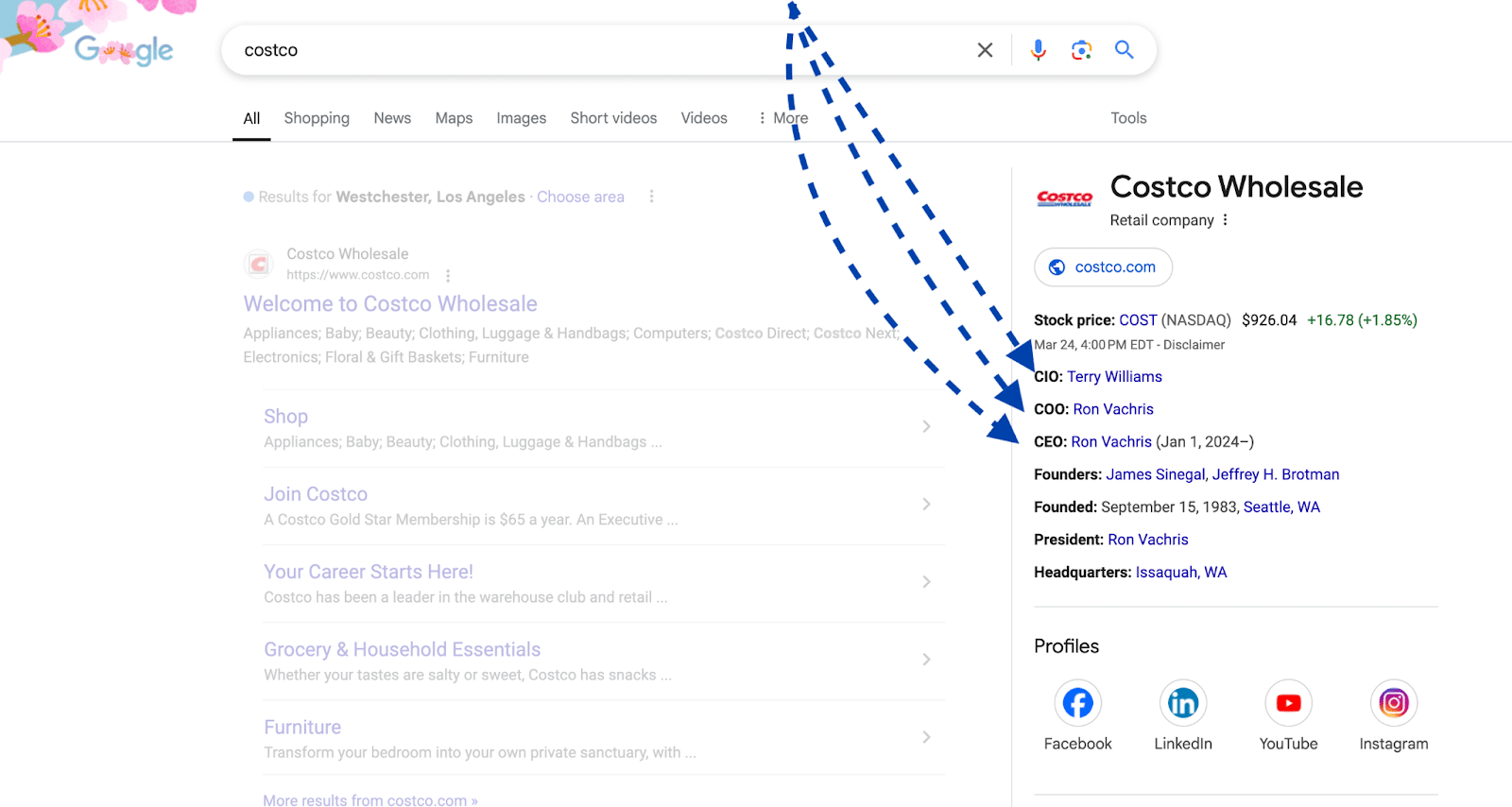
The person’s name is clickable and links directly to their brand SERP.
This highlights the importance of optimizing the personal brand SERP and knowledge panel for key people in your company, as this is how you’ll trigger them within the corporate knowledge panel.
Social profiles
On desktop, you’ll see up to four social profiles.
On mobile, if you have them and Google can identify them as yours, you may see five or six.
The selection of social channels is made on a per-company basis and is influenced by social signals such as followers, content volume, user-generated content, and engagement.
Warning: If you have different social accounts on the same platform for various languages, countries, departments, or products, Google may incorrectly link them.
It’s important to clarify which audience each profile serves and have a page (or pages) on your website that clearly outlines the profile-to-audience relationship.
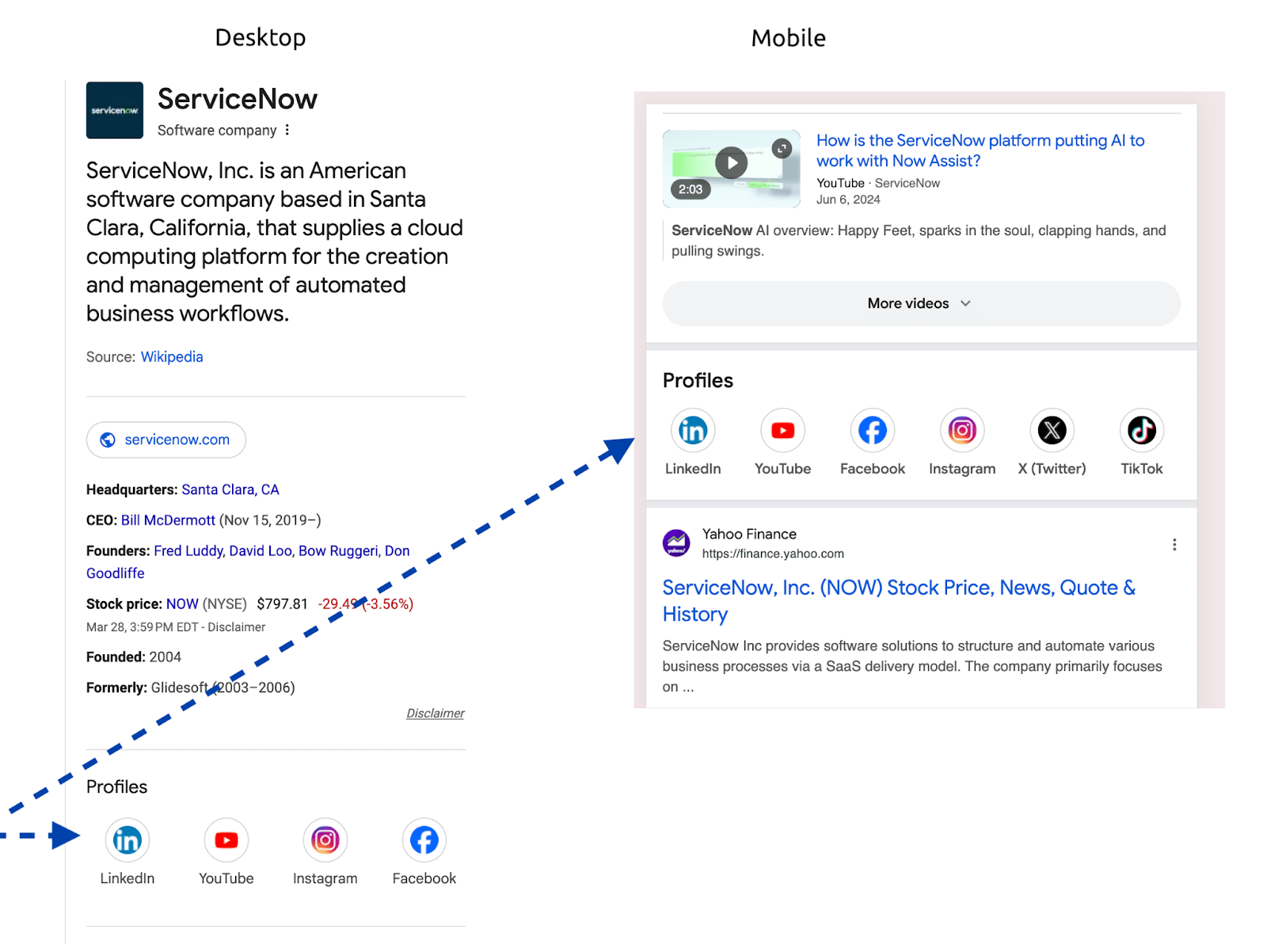
Shop ratings
When a company is closely associated with its store, the Google Store Rating appears, linking to a Google Store Page with videos, products, reviews, insights, and an “About” summary.
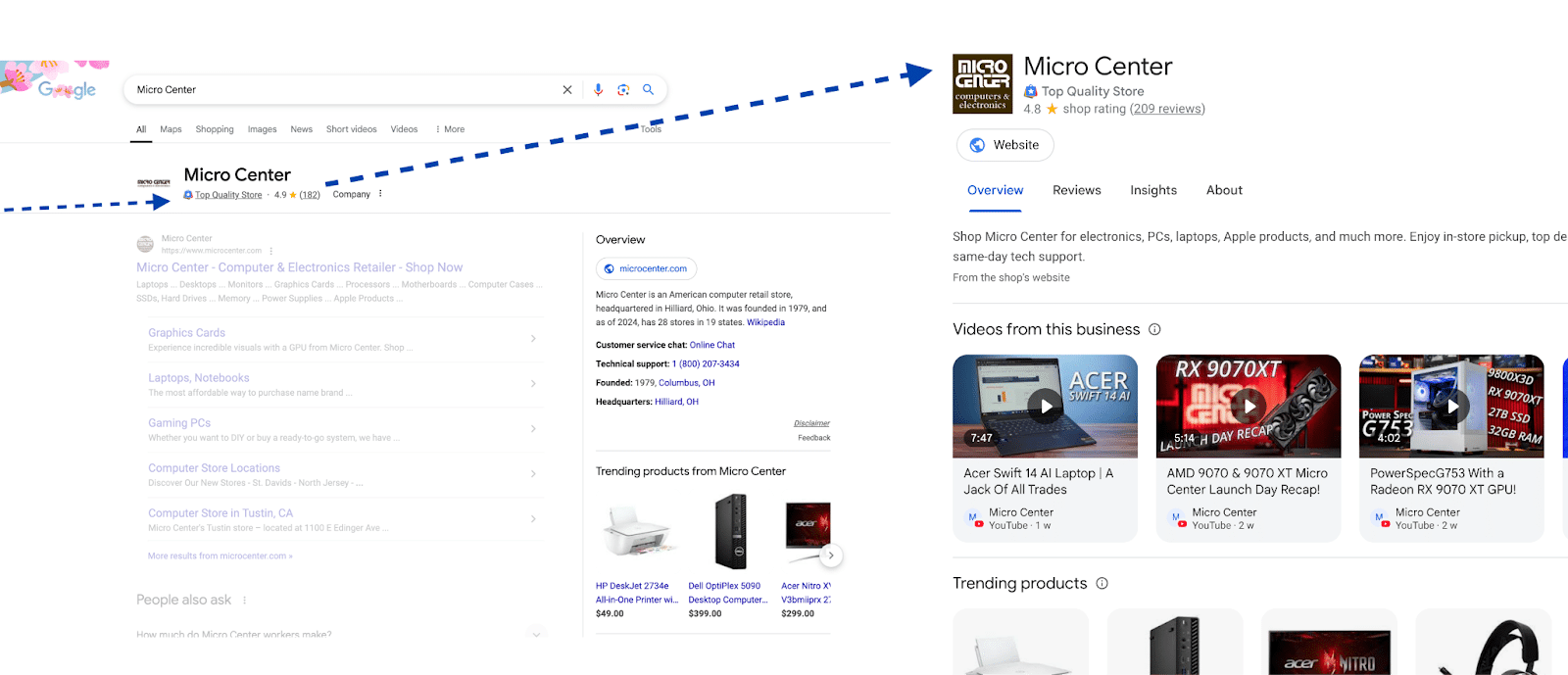
Reviews and ratings
These are drawn from multiple review sites across the web.
To optimize this, identify the strongest platforms in your industry and focus on maintaining high scores.
ScamAdvisor leads, followed by SiteJabber.
Unfortunately, these platforms gather reviews from users who may not have verified experience with the company, adding another reason to focus on proactive reputation management.
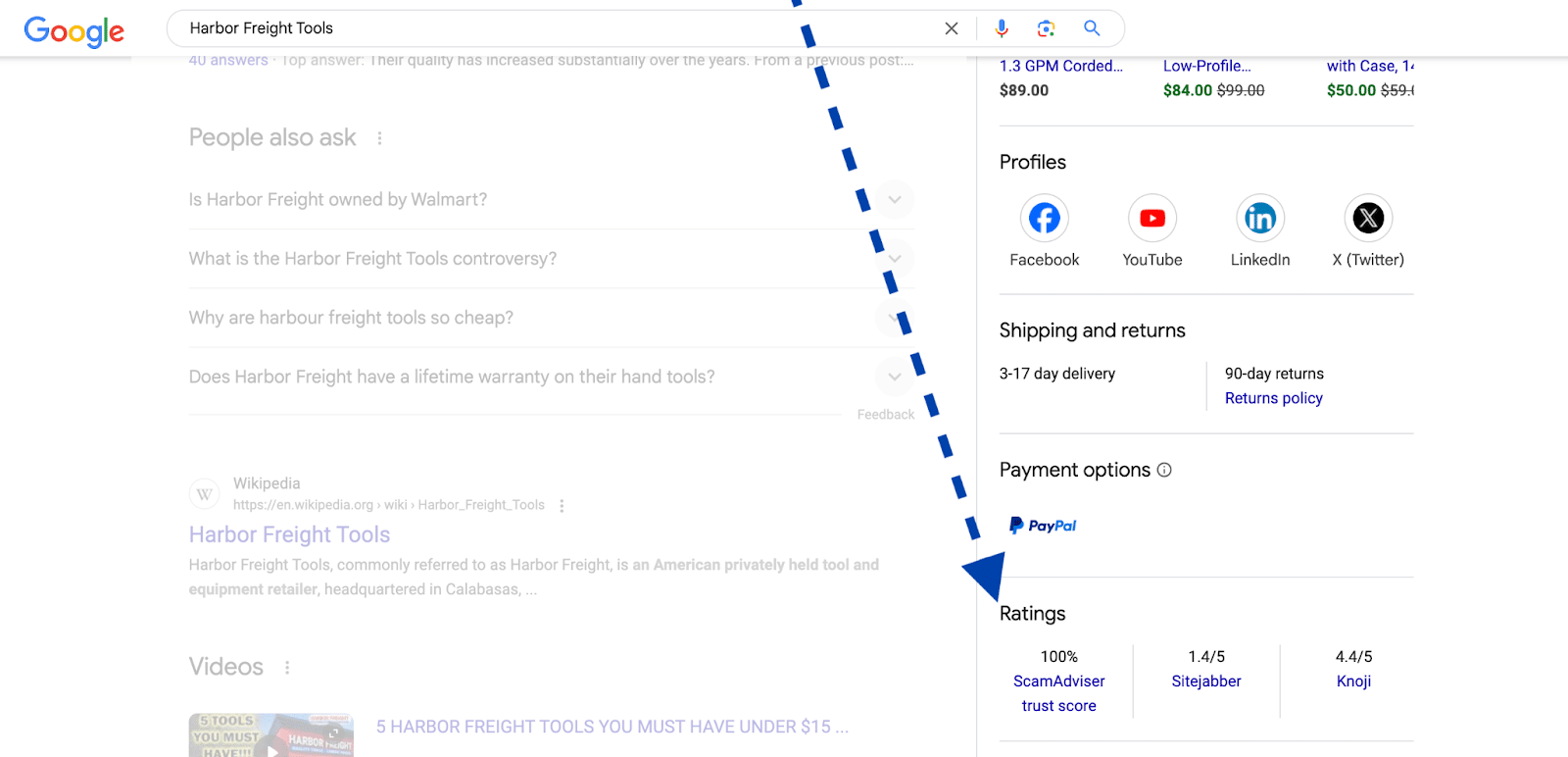
Video reviews
When a company is closely associated with its products, video reviews will appear.
Proactive reputation management of user-generated content (UGC) videos is becoming an increasingly important aspect of your corporate strategy.
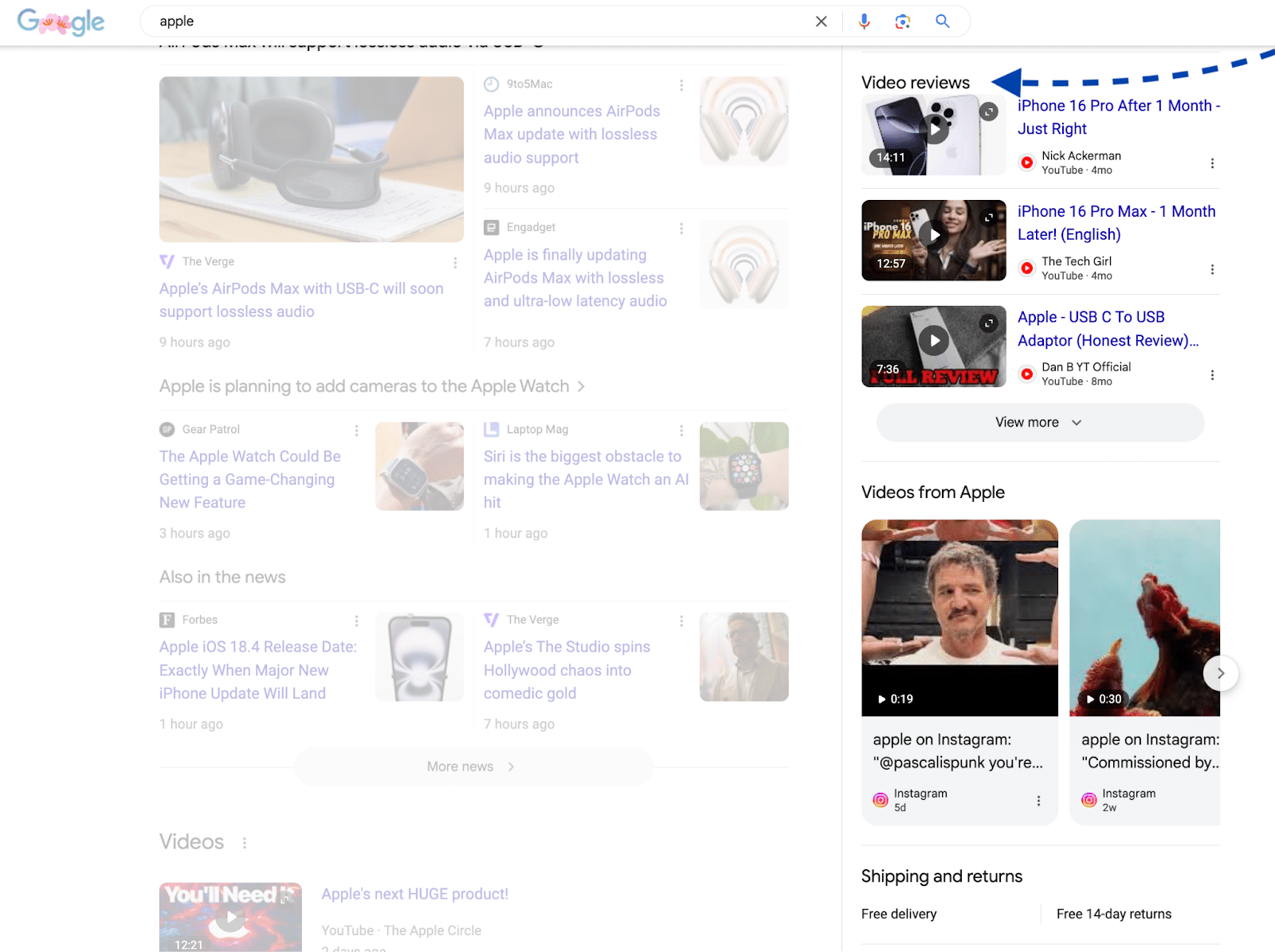
Policy attributes
Google will display store policies, such as shipping terms, payment methods, and return policies, when it’s confident it has understood them.
To trigger these attributes, ensure your policies are clearly outlined and easily accessible on your site.
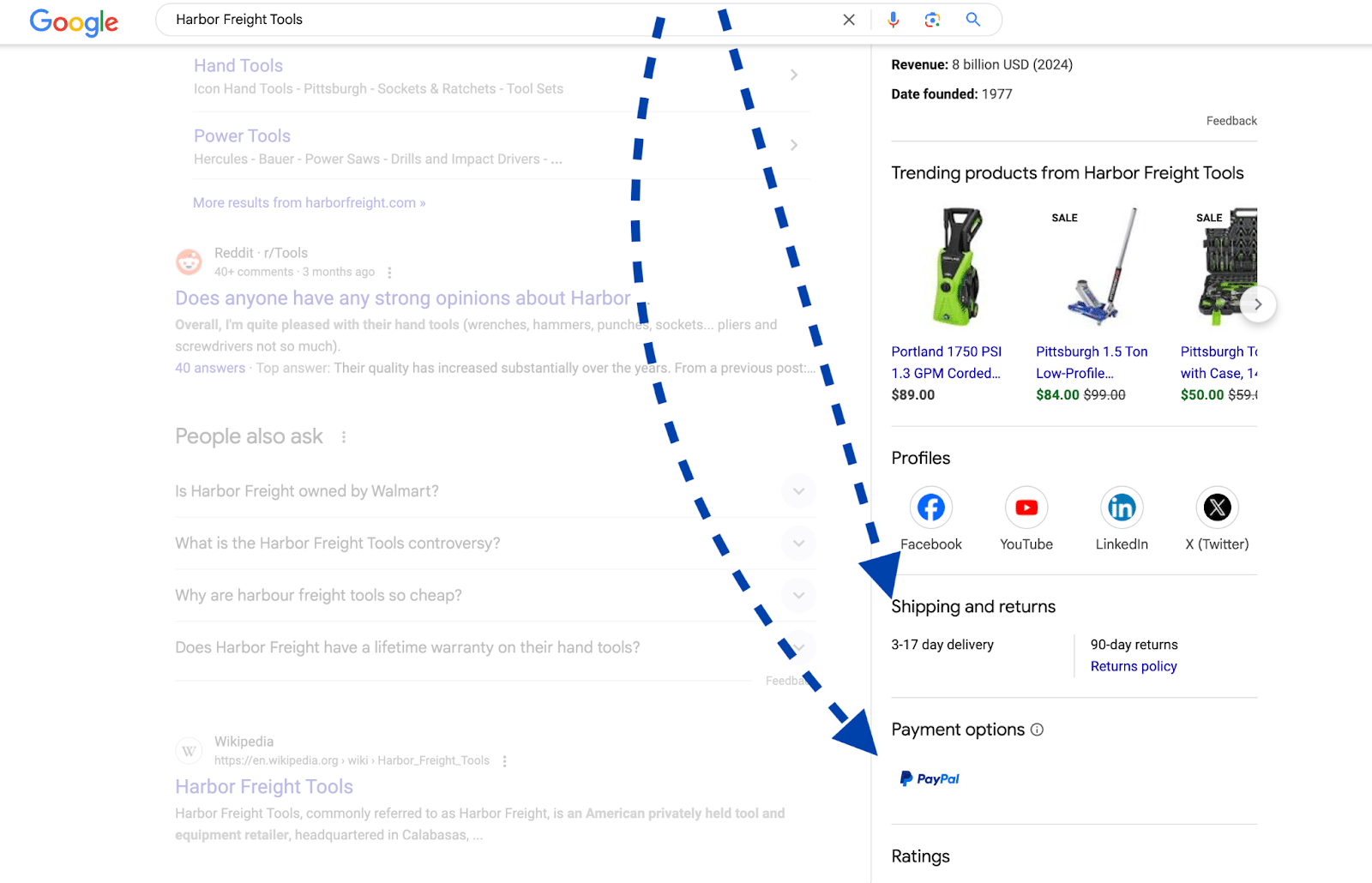
Videos from
When a company has active social channels with video content and significant engagement, videos from those channels will appear.
This represents valuable brand SERP real estate, making it a great incentive to invest resources in producing and posting quality, relevant, and engaging videos across your social media channels.

Trending entities
This can include products or, theoretically, any related category of entities that are relevant and popular.
While we don’t know exactly how the algorithms select these entities, search volume likely plays a key role.

Related entities
In this case, it may be related products, such as the latest car models.
However, Google could show any category closely tied to the brand.
The chosen category depends on the strength and relevance of the relationship.
By strengthening your presence in the knowledge graph, you can influence which related entities are displayed.
The entities shown within that category can also change (see “People also search for” below).
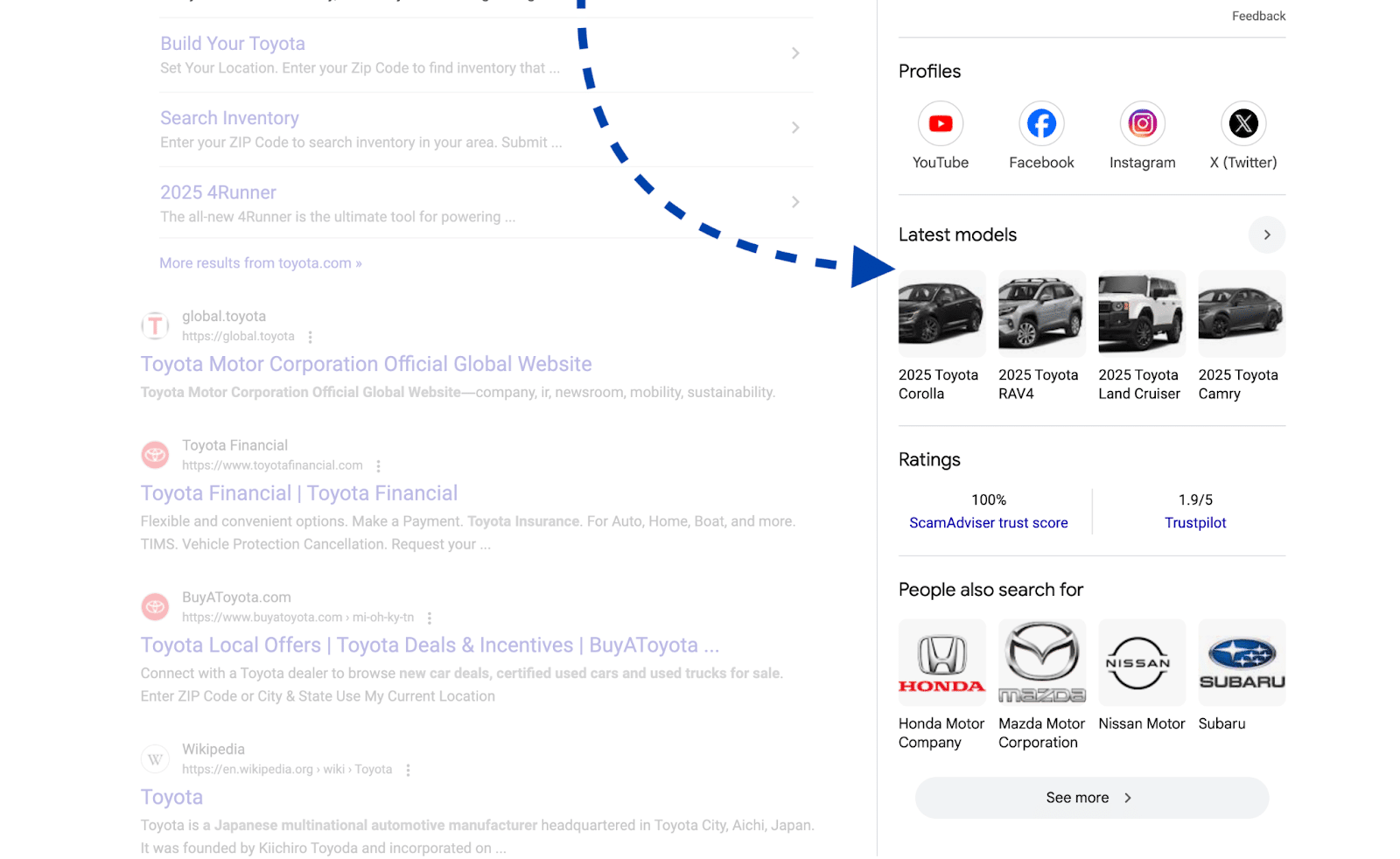
People also search for
These are the companies that Google’s knowledge algorithms consider the most relevant – your direct competitors.
You may not agree with the selection, but this presents an opportunity to examine why Google made this choice.
Consider the following:
- How you are communicating: Your brand communication is likely inconsistent across the web, which may cause confusion.
- Are you misclassified on industry, corporate, and review platforms? Review the companies listed in your category and consider asking for reclassification if necessary.
- Do you share an audience with these brands? Google’s algorithms might show competitors that share a similar audience or market.
Changing this element is the hardest and slowest process in a knowledge panel.
It requires moving your company from one cohort to another in Google’s Knowledge Graph.
Based on our experience, this process can take a year or more.
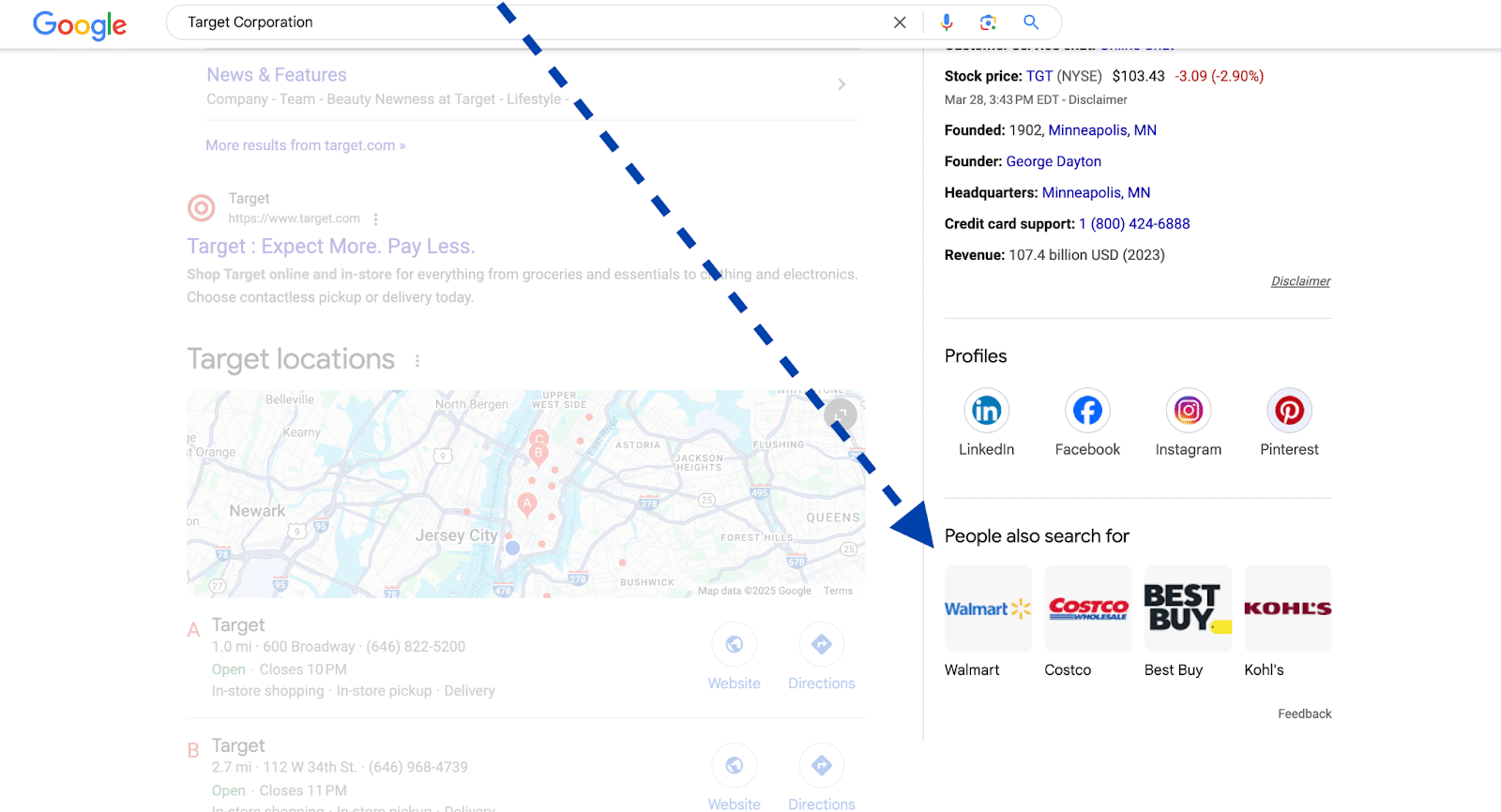
AI Overviews
These features sometimes appear when a knowledge panel is triggered, although they generally don’t show up when horizontal knowledge panel cards are present.
They are becoming more frequent when a Google Business Profile (GBP) triggers for major corporations.

AI-driven multi-source descriptions
We’ve only seen AI-driven multi-source descriptions for person entities, but it’s safe to assume this will extend to other entity types soon.
Google now uses Gemini to combine multiple descriptions from various sources.
If you’ve been relying on a single source for your knowledge panel description (like Wikipedia), you’ll need to optimize descriptions across all platforms that Google may pull from, including your website.
Optimizing your entire digital footprint is essential.
This is the only way to ensure that the description Google displays in your knowledge panel accurately reflects your official brand narrative.

Knowledge panels make you money: Optimize them now
The knowledge panel for a corporation is often seen as a vanity metric, but it’s essential to your business.
Those searching for your brand are likely to be:
- Clients, whom you need to retain with a strong brand image.
- Prospects, whom you need to convince.
- Business partners, whom you need to impress.
Anyone who sees your knowledge panel – Google’s “stamp of approval” – is part of your A-list audience, the people who can drive growth and improve your bottom line.
A well-optimized knowledge panel is a valuable asset, now is the time to improve yours.
Google’s knowledge algorithms and knowledge graph are still malleable, and last June’s leak revealed that AI-generated descriptions are being used as synthetic data.
AI will likely impact attributes, relationships, and new entities.
The longer you delay optimization, the harder it will be to maintain control over your brand’s knowledge panel and its influence.
